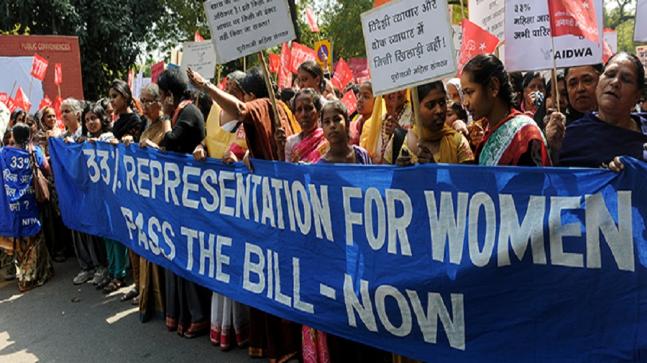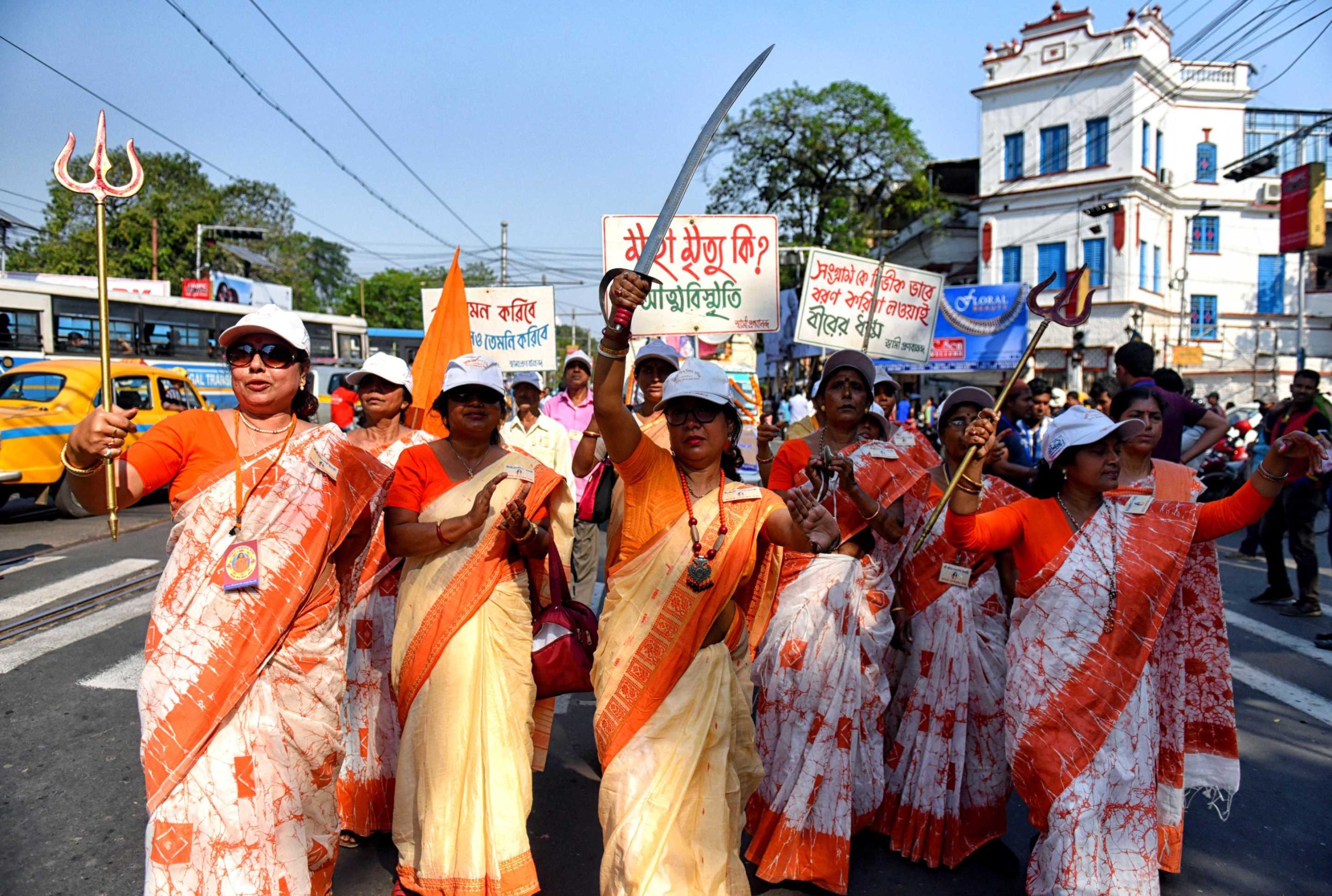Posted by Anjali Menon
In 2012, the gang rape and murder of a 23-year-old girl in the national capital made headlines and shook the conscience of the nation. Ever since, our political landscape has accommodated women in their speeches and manifestos. Not to say that women never featured previously – but the calls for safety, the headlines, the issues definitely made more appearances than before.
Even as of today, the Sabarimala row occupies much of prime time. The BJP doesn’t want women to enter the temple; the Congress as usual fails to take a stand against this and goes on to play some soft Hindutva. They too are now demanding that women stay out. When it comes to the denial of rights, politics is never far behind. So ‘women’s issues’ play a huge role in the political landscape. Men like to talk about women in public discourses, but are these male politicians willing to share power with women?
Men like to talk about women in public discourses, but are these male politicians willing to share power with women?
The figures of women’s representation in parliament and legislative assemblies are not very kind to look at. In 1952, Jawaharlal Nehru, a figure from history who has somehow become the news of today as well, wrote a letter to all his chief ministers regarding this isuue. In the letter, he writes, “I have noticed with great regret how few women have been elected. I suppose this is so in the state assemblies and councils also. It is not a matter of showing favor to anyone or even injustice, but rather of doing something which is not conducive to the future growth of the country. I am quite sure our real growth will only come when women have a full chance to play their part in public life.”
In the year 1952, women were 49% of the country’s population; but the first Lok Sabha in the same year saw merely 22 women getting elected, an appalling 5% of the entire house. In Lok Sabha 2014, 66 women were elected as parliamentarians – still only 11% of the house. To add to this, out of all the Indian MLAs only 9% are women. From 1952 to 2014, over a span of 64 years, our growth was slow and almost invisible.
Also read: Let’s Talk About the ‘Worst Country for Women,’ Shall We?
Why are there so few women in politics is a question that is asked consistently. The answer is nothing new. Domestic work and rearing children are still tasks primarily performed only by women. There is a huge stigma associated with women who choose to work, and even more for the ones who choose to join politics. For those women who do manage to stick their neck out and enter the political spectrum, a special dose of blatant misogyny is reserved.
In 2014, Gul Panag from AAP (Aam Admi Party) who was contesting elections from Chandigarh had to battle a smear campaign from a twitter handle by the name BJP2014. The BJP denied any official association with the handle. In 1995, BSP’s (Bahujan Samaj Party) Mayawati had to lock herself up in a government guesthouse to protect herself from a mob that was allegedly led by the SP. These examples go on and form a very long list including women across political parties. So quite obviously, politics like most professions has not been able to provide a safe space for women.
There is a huge stigma associated with women who choose to work, and even more for the ones who choose to join politics.
But as far as representation goes, there are no two ways about it. We have to have more women in parliament simply because the only progressive way for a country to move forward on the road of development is to have diverse lawmakers. The parliament and state legislative houses are where important conversations and decision making takes place. More than anywhere else, it is important for this space to be as diverse and inclusive.
This change is not going to just walk in and grace us with its presence one day. It requires perseverance. The solution is not a new one, in fact it already exists – the long pending Women’s Reservation Bill. A bill that reserves 33% of seats in parliament for women but unfortunately lies lapsed in Lok Sabha for years together. In the ten years of Congress governance and four and half years of BJP governance, the bill has still not been tabled.
For a while now, political leaders and a few journalists alike have been quite obsessed with history and historical figures. Our first Prime Minister, Nehru is still dominating prime time. We seem to love to indulge in history and conveniently ignore the great distress that is today. But since we seem to be so adamant about living in the past, let’s try learning from history a little.
Also read: It’s 2018. Where Are The Women In Policymaking?
The disagreements with Nehru don’t seem to stop, but we can try building bridges. Like him or not, he got one thing right – it is indeed sad that in a country with 49% women, only so few of us make it to parliament. Real growth will only come when women get their full chance to play their part in public life. And if politics, the youth, and people of today, in general, cared about women, the Women’s Reservation Bill would’ve been tabled and passed by now.
Anjali Menon is a lover of tea, hoarder of books, and an eccentric cat lady, mostly found daydreaming. You can follow her on Instagram and Twitter
Featured Image Source: India Today
About the author(s)
Guest Writers are writers who occasionally write on FII.




